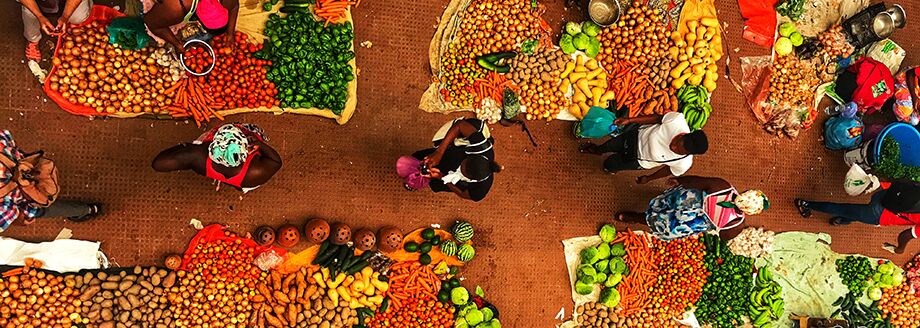FAO provides guidance and tools for the development of sustainable food systems for healthy diets. Achieving positive nutritional outcomes requires a clear understanding not only of the way food is produced, but also of how it is processed, distributed, marketed and consumed.
To this end, FAO focuses on:
- Inclusive markets that ensure access to all producers and consumers, including small-scale farmers and vulnerable groups, thus creating wellness, jobs and affordable goods and services; and
- Healthy food environments in which diversified nutritious food, especially fresh fruits and vegetables, is available, affordable, convenient and desirable to people.
How we work
To mobilize a shift towards sustainable food systems for healthy diets, FAO engages two main approaches:
Value chain approaches provide a key framework for understanding how a product moves from producer to customer. More specifically, they offer an important means for understanding business-to-business relationships and mechanisms for increasing efficiency, productivity and added value. The value chain approach is an effective vehicle for pro-poor initiatives, and for linking smallholder farmers and small and medium-sized enterprises (SMEs) with markets and consumers. FAO mainstreams nutrition and gender into classic value chain approaches in order to identify suitable solutions that can support the transition towards sustainable food systems for healthy diets.
- Territorial approaches do not depend on a single, fixed framework, but are instead defined by their focus on specific territories (which may include both rural and urban areas). They address development across multiple sectors, are implemented by and with a range of public and private stakeholders, and are managed through a multilevel governance structure. A territorial approach can enable a government to build on specific local assets and networks to better address geographical or rural–urban inequalities and more effectively integrate the social, economic and environmental dimensions of sustainability. FAO uses this approach to give more value to local and diverse foods that can promote sustainable consumption patterns and sustainable development in general.
What we do
Depending on context and needs, FAO uses one or more tools to support countries and governments in shifting towards sustainable food systems for healthy diets:
News
New publications:
News and Videos:


